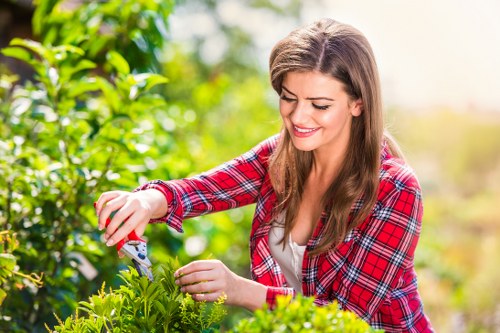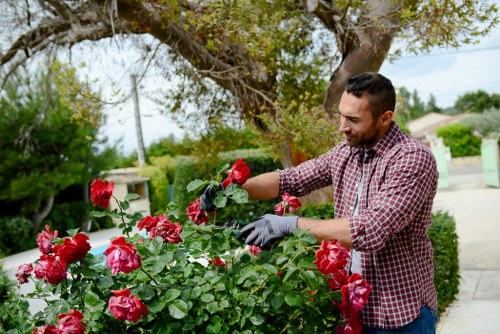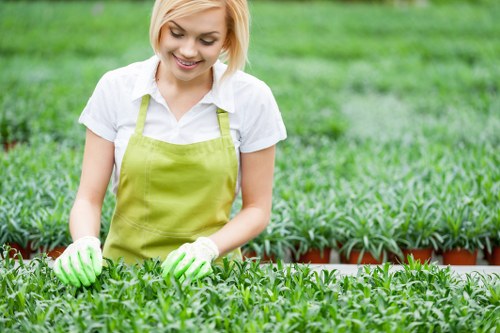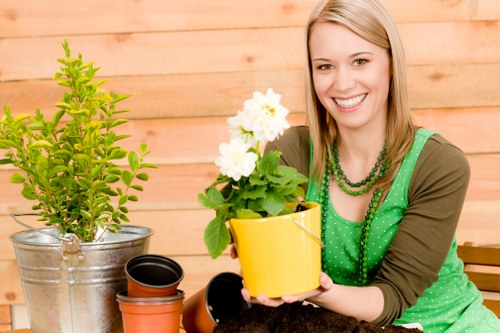Gardener Poplar: The Ultimate Guide for Green Thumbs

Gardening is a rewarding hobby that allows you to connect with nature and create beautiful outdoor spaces. One of the most versatile and beloved trees in gardening is the Poplar. Whether you're a seasoned gardener or just starting, understanding how to cultivate and care for poplar trees can enhance your garden's aesthetic and environmental value.
Poplar trees are known for their rapid growth, making them ideal for creating shade, windbreaks, or as a focal point in larger landscapes. They come in various species, each with unique characteristics that can suit different garden styles and climates.
In this comprehensive guide, we'll explore everything you need to know about growing and maintaining poplar trees, including their benefits, ideal planting conditions, common challenges, and tips for successful cultivation.

The Benefits of Planting Poplar Trees
Poplar trees offer numerous advantages for both gardeners and the environment. Here are some of the key benefits:
- Fast Growth: Poplars are among the fastest-growing trees, allowing for quick establishment and quicker returns on your gardening efforts.
- Shade and Shelter: Their large canopy provides excellent shade, helping to cool your garden and reduce energy costs.
- Erosion Control: The extensive root systems of poplars help prevent soil erosion, especially in areas prone to heavy rainfall or wind.
- Habitat Creation: Poplar trees support local wildlife by providing habitat and food for various species.
- Aesthetic Appeal: With their tall, graceful stature and vibrant foliage, poplars add visual interest and beauty to any garden.
Additionally, poplar trees are valuable for their timber and can be used in various landscaping projects, making them a practical choice for both ornamental and functional purposes.
Understanding these benefits can help you make informed decisions when incorporating poplars into your gardening plans.

Choosing the Right Poplar Species
There are several species of poplar trees, each with its own set of characteristics. Selecting the right species for your garden depends on several factors, including climate, soil type, and the specific purpose you have in mind.
Lombardy Poplar (Populus nigra 'Italica')
The Lombardy poplar is known for its tall, columnar shape, making it perfect for narrow spaces or as a windbreak. It thrives in full sun and well-drained soil.
White Poplar (Populus alba)
The white poplar features distinctive white bark and lush green leaves that turn yellow in the fall. It's suitable for larger gardens and provides excellent shade.
Cottonwood (Populus deltoides)
Cottonwoods are native to North America and are prized for their rapid growth and resilience. They prefer moist soil and are ideal for areas near water sources.
Eastern Cottonwood (Populus deltoides 'Monviso')
This dwarf variety of cottonwood is more manageable in size, making it suitable for smaller gardens while still offering the benefits of traditional cottonwoods.
Consider the specific needs of each species and how they align with your garden's conditions to ensure successful growth and maintenance.

Planting and Caring for Poplar Trees
Proper planting and maintenance are crucial for the healthy growth of poplar trees. Follow these steps to ensure your poplar thrives:
- Site Selection: Choose a location that receives full sunlight and has well-drained soil. Avoid areas with strong winds, as poplars can be susceptible to wind damage.
- Soil Preparation: Test your soil's pH and nutrient levels. Poplars prefer slightly acidic to neutral soil. Amend the soil as needed with compost or other organic matter to improve fertility and drainage.
- Planting: Dig a hole twice as wide and as deep as the root ball. Place the tree in the hole, ensuring the top of the root ball is level with the surrounding soil. Backfill with soil and gently firm it around the base.
- Watering: Provide regular watering, especially during the first few years. Poplars need consistent moisture, but avoid waterlogging the soil.
- Mulching: Apply a layer of mulch around the base of the tree to retain moisture, suppress weeds, and regulate soil temperature.
- Pruning: Prune young trees to establish a strong structure. Remove any dead or diseased branches and thin out crowded areas to improve air circulation.
Fertilizing Poplar Trees
Poplars generally require minimal fertilization. However, applying a balanced fertilizer in early spring can promote healthy growth. Avoid over-fertilizing, as this can lead to excessive growth and weak branches.
Pest and Disease Management
While poplar trees are relatively hardy, they can be susceptible to certain pests and diseases. Common issues include:
- Poplar Borer: This insect can cause significant damage to the tree's trunk and branches. Monitor for signs of infestation and treat promptly if detected.
- Leaf Spot Diseases: Fungal infections can cause discoloration and defoliation. Ensure good air circulation and remove affected leaves to prevent spread.
- Aphids: These small insects feed on sap and can weaken the tree. Use insecticidal soap or introduce natural predators to control aphid populations.
Regular monitoring and prompt treatment of pests and diseases are essential for maintaining the health and longevity of your poplar trees.

Local Relevance: Poplar Gardening in Nearby Areas
If you're gardening in Poplar, there are several nearby areas that offer unique opportunities and resources for gardeners. Here are some of the closest areas to Poplar that can enhance your gardening experience:
- East End Greenreach: Located just 2 miles from Poplar, East End Greenreach is known for its community gardens and gardening workshops.
- Riverbank Meadows: A 3-mile distance from Poplar, Riverbank Meadows offers vast open spaces ideal for planting large poplar trees.
- Maplewood Park: Situated 4 miles away, Maplewood Park features a variety of plant species and is a great place for plant enthusiasts to exchange tips.
- Sunnyvale Estates: Only 5 miles from Poplar, Sunnyvale Estates has numerous nurseries and garden centers specializing in poplar trees.
- Willow Creek: Located 6 miles from Poplar, Willow Creek provides fertile soil areas perfect for experimental gardening projects.
- Pine Ridge: A 7-mile distance, Pine Ridge is famous for its botanical gardens and seasonal flower displays.
- Greenfield Heights: Situated 8 miles away, Greenfield Heights offers landscape design services and professional gardening advice.
- Hillside Grove: 9 miles from Poplar, Hillside Grove has well-maintained walking trails and green spaces ideal for leisurely gardening activities.
- Oakwood Village: Located 10 miles away, Oakwood Village hosts annual gardening fairs and poplar tree exhibitions.
- Fern Valley: At a distance of 11 miles from Poplar, Fern Valley is known for its diverse plant species and thriving gardening community.
Exploring these nearby areas can provide you with additional resources, inspiration, and support as you cultivate your poplar trees in Poplar.
FAQs
1. How tall can poplar trees grow?
Poplar trees can grow anywhere from 30 feet to over 100 feet tall, depending on the species and growing conditions.
2. Are poplar trees suitable for small gardens?
While some poplar species can grow quite large, there are dwarf varieties available that are better suited for smaller gardens.
3. Do poplar trees require a lot of maintenance?
Poplar trees generally require minimal maintenance, but regular watering, occasional pruning, and monitoring for pests and diseases are recommended to keep them healthy.
4. Can poplar trees improve air quality?
Yes, like other trees, poplars absorb carbon dioxide and release oxygen, contributing to improved air quality.
5. What is the best time of year to plant poplar trees?
The best time to plant poplar trees is during the early spring or late fall when the weather is cooler and the trees can establish their root systems before the growing season.